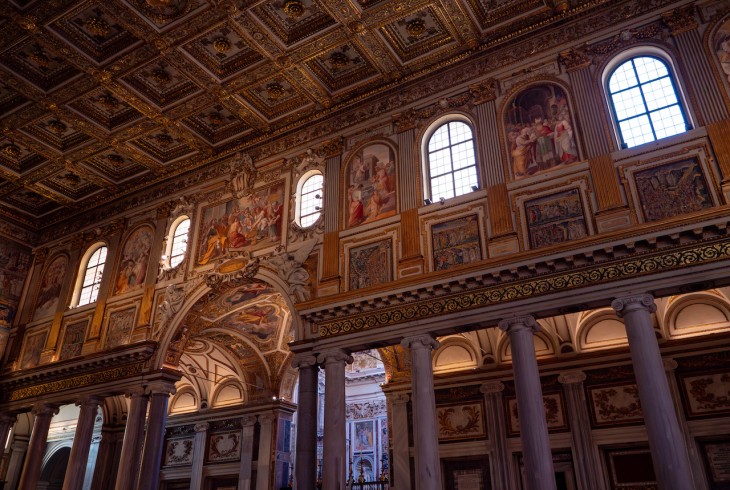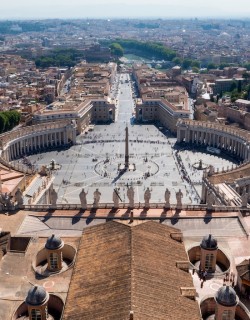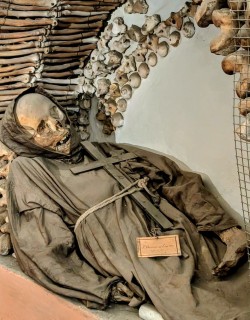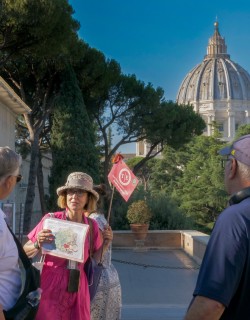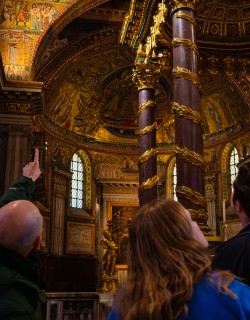In this article, I will cover the top things to see in Santa Maria Maggiore. The Basilica Papale di Santa Maria Maggiore is one of Rome's four Papal Basilicas and the location of one of the five Holy Doors located throughout the city for Jubilee 2025.
Founded in the 5th century AD, today, it's the largest church dedicated to the Virgin Mary in Rome and is one of the city's most beloved places of worship. Of all of Rome's Papal Basilicas, Santa Maria Maggiore often feels the most 'real' and less museum-like. There's a vibrant local congregation here that visits daily. Among the myriad artistic treasures, you'll find both a beautiful and intimate spiritual space.
The Top Things to See in Santa Maria Maggiore
1: The Tomb of Bernini
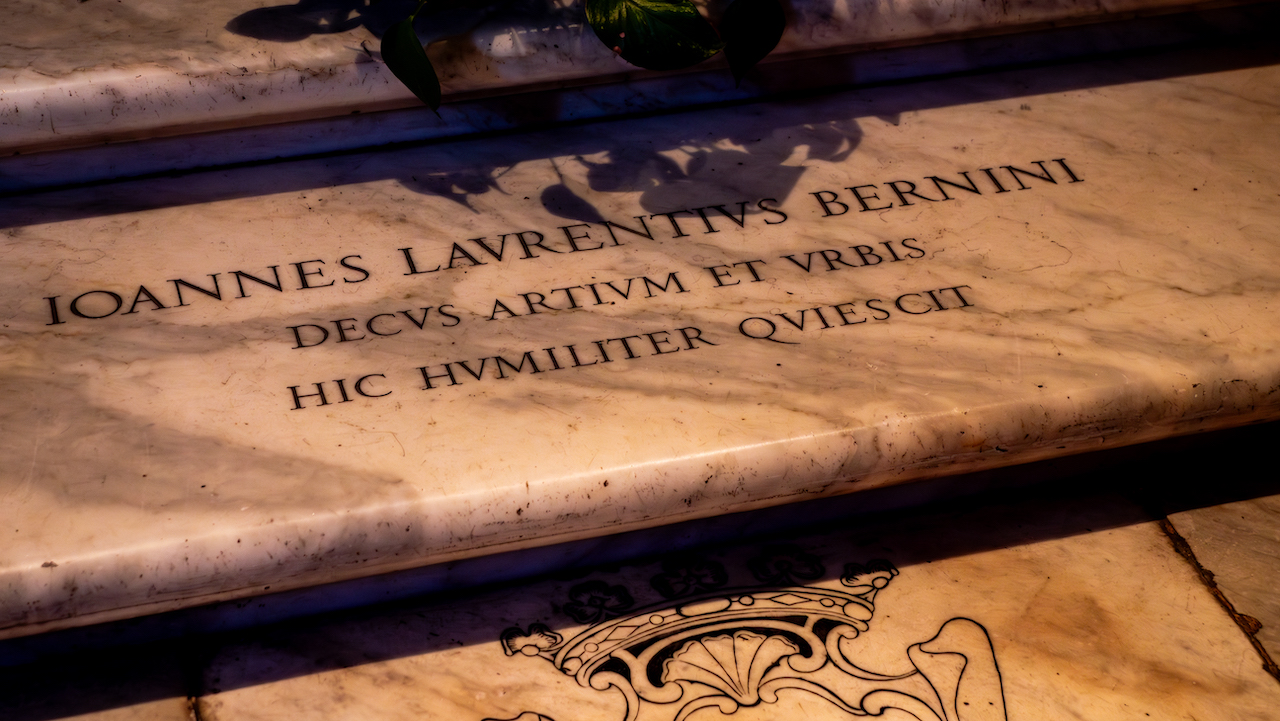
The extravagant Baroque genius Gian Lorenzo Bernini died on November 28th, 1680, just short of his 82nd birthday. He was buried without pomp or ceremony in a humble tomb under a step to the right of the Basilica's Papal altar. Blink, and you'll miss it.
Look for an inscription etched into a marble step. The tomb appears humble at first glance, but when you consider that he is buried almost under the Papal Altar of one of Rome's four Papal Basilicas, we remember how respected he was.
2: The Holy Door
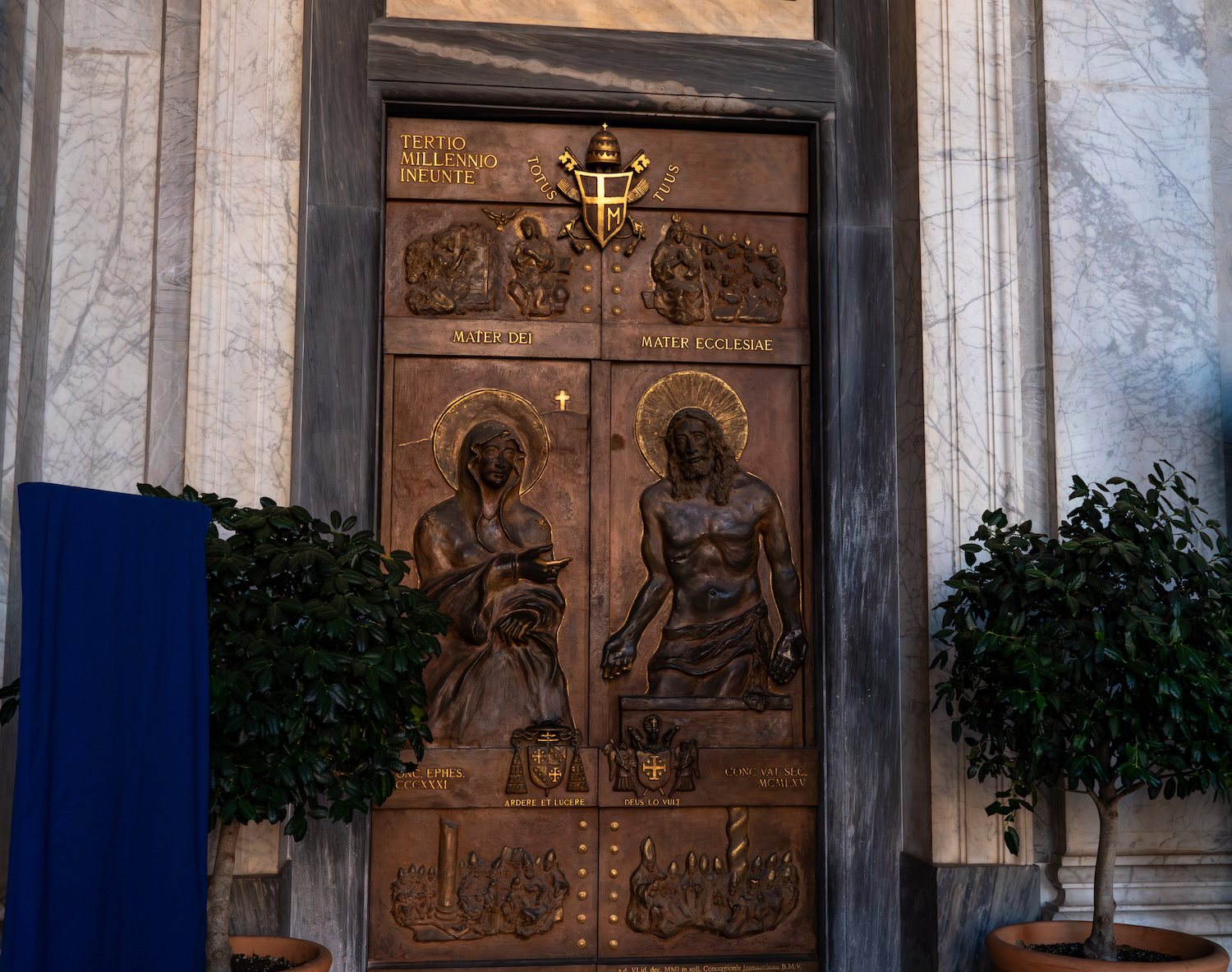
Santa Maria Maggiore is one of Rome's four papal basilicas and hosts one of the city's "Holy Doors." These revered portals are a focus of pilgrimage for Catholics during Jubilee or Holy Years. During these special years, Catholics flock to the city to pass through the doors on pilgrimage. In between Holy Years, the doors are sealed and bricked up.
3: A Glittering Renaissance Ceiling
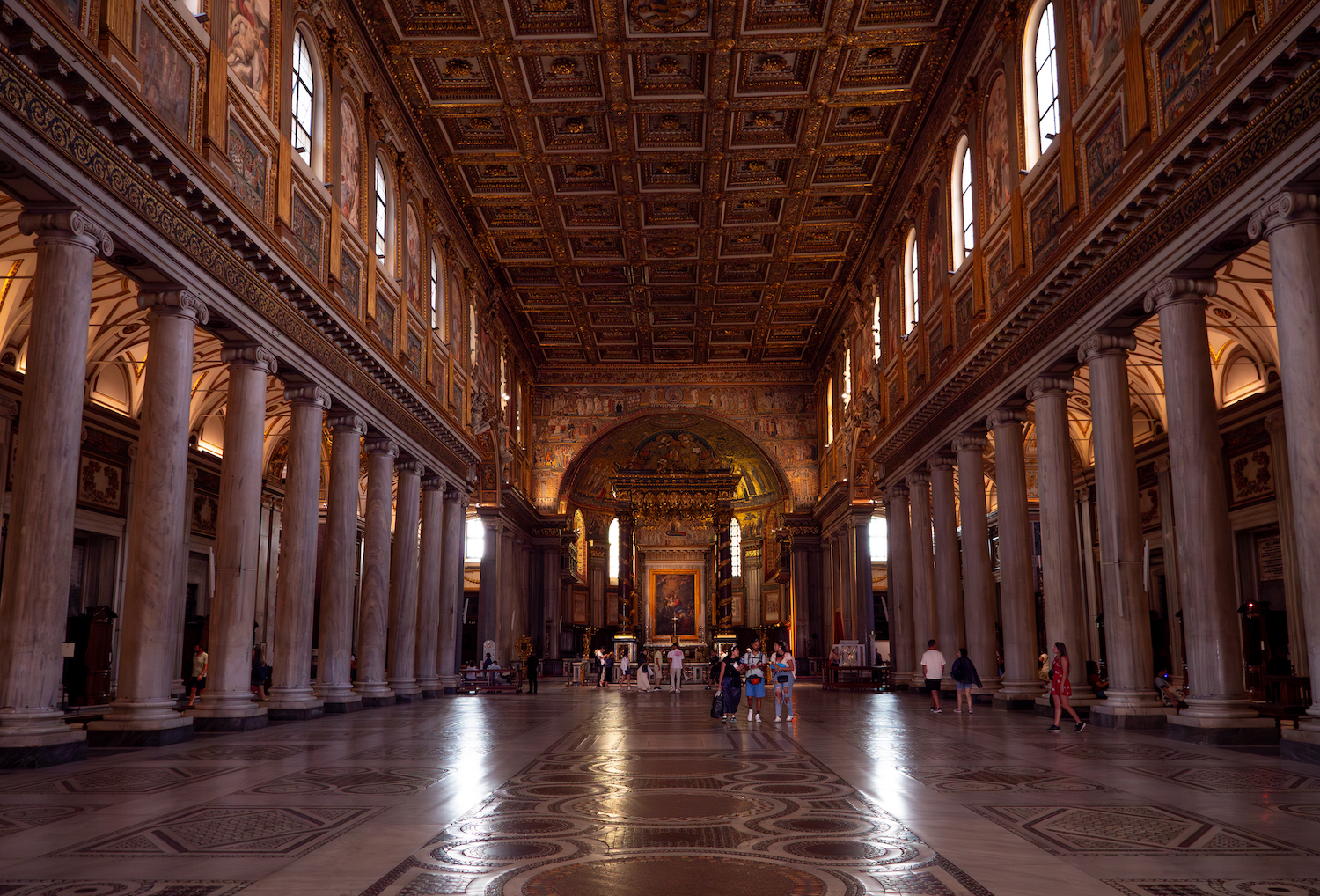
The stunning golden, wooden-coffered ceiling of the Basilica dates to the 15th century. Pope Alexander VI commissioned it from Antonio Sangallo the Elder. According to local legend, the spectacular gold leaf that adorns the ceiling is said to be the first gold to arrive from the New World.
4: Artworks By Bernini
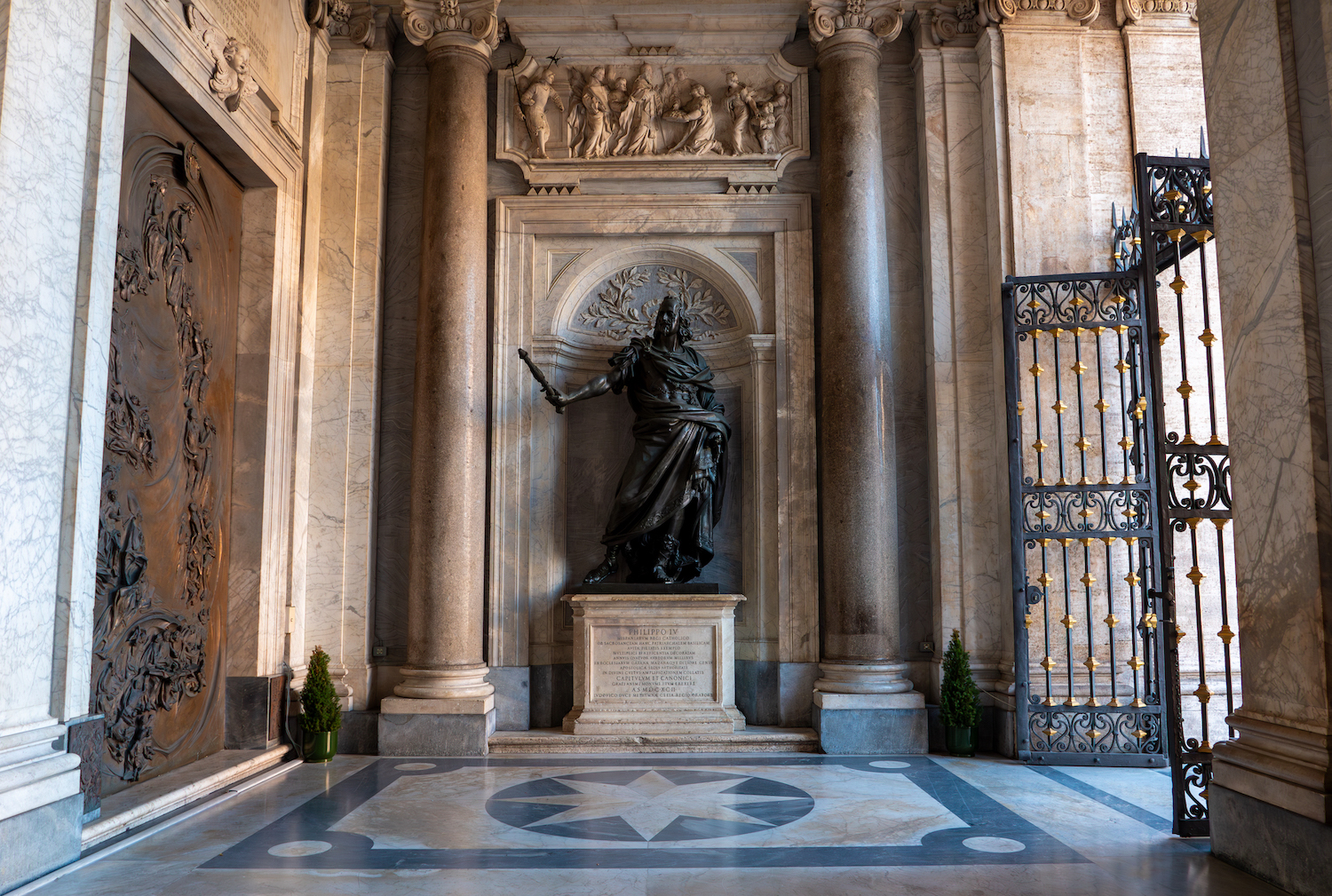
Bernini is interred in this Basilica, which is unsurprising given that he is credited with two works within the church: the elegant spiral staircase in the sacristy and a refined bronze statue of Philip IV of Spain in the loggia at the entrance. Indeed, his workshop was located just behind this grand Marion church. These are little-known works by one of Rome's most prolific Baroque artists.
5: Relics of the Crib of Christ

Over the centuries, Santa Maria Maggiore has had many names. One was the 'church of the Crib' or Sancta Maria "ad Praesepem." This is owing to one of the Basilica's most significant relics: fragments of the crib, or manger of Christ. Today, in the confessio, under the Papal altar, you can find five pieces of sycamore wood encased in a sumptuous crystalline and silver reliquary commissioned by Pope Pius IX in the 19th century. It's one of the most evocative spaces of the Basilica.
6: Santa Maria di Salus Populi Romani
For many Romans, THE most precious object in Santa Maria Maggiore is the devotional image of the Virgin Mary of "health/salvation of the Roman People." (Santa Maria di Salus Populi Romani). Today, it's housed in the Pauline (Borghese) Chapel, a space of personal contemplation and worship.
This image of the Virgin is said to have been painted from life by St. Luke. Indeed, historians date the icon anywhere from the 5th to the 13th century AD.
However, this painting's significance dates back to the 6th century AD, the time of the Justinian Plague.
With thousands of Romans suffering and dying, the Pope, Gregory the Great, asked that a sacred image be brought from Greece to Rome. They took the image on a three-day procession through the city, praying for salvation. During the procession, the Pope had a vision - the Archangel Michael appeared to him above the ancient mausoleum of the emperor Hadrian.
The Pope saw this as a sign. The archangel would slay the plague and bring it to an end. Indeed, the sickness crippling Rome started to come to an end.
In honor of this miracle, the Pope converted Hadrian's Mausoleum into Castel Sant'Angelo and gave the miraculous image of the Virgin a new home in Santa Maria Maggiore.
Even today, it's a source of inspiration for locals who visit in search of help when their loved ones fall ill
7: The Archaeological Excavations
The Vatican only recently opened the archaeological excavations under the Basilica to the public.
Archaeologists discovered the well-preserved remains of a Roman house in the 1960s. Any underground Roman ruins are always fascinating. However, this site includes amazing ancient frescoes depicting an ancient agrarian calendar (2nd Century AD) —the only one of its kind in Rome.
It's a must-visit location, as yet undiscovered by the tourist hoards.
8: Nativity of Arnolfo di Cambio
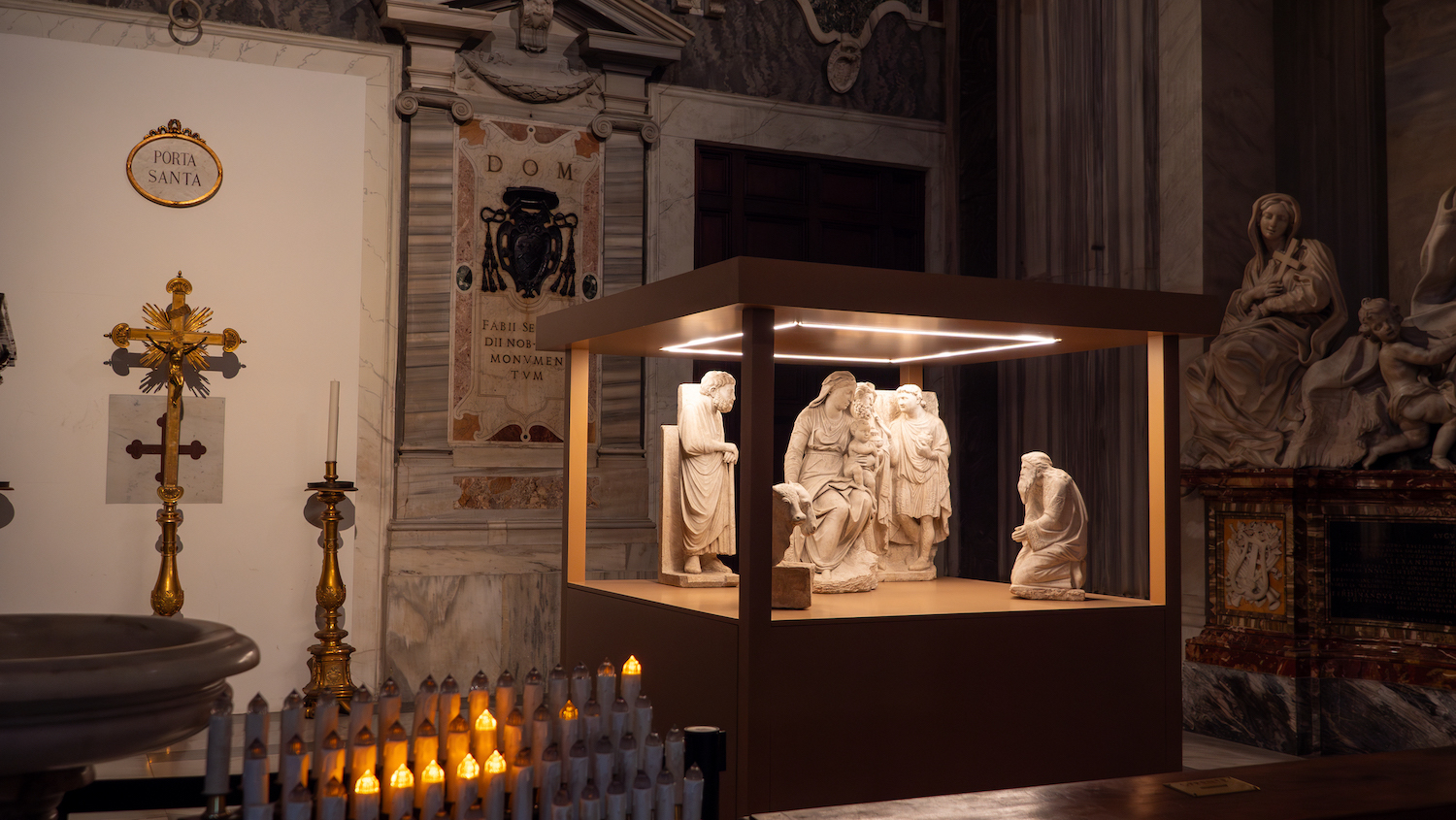
Sculpted in 1291 AD from Carrara marble, this singular, stunning Nativity scene was sculpted by Arnolfo di Cambio at the behest of Pope Nicholas IV. It's a rare wonder of Medieval art and is considered the first Nativity in art history.
9: The Ancient Mosaics
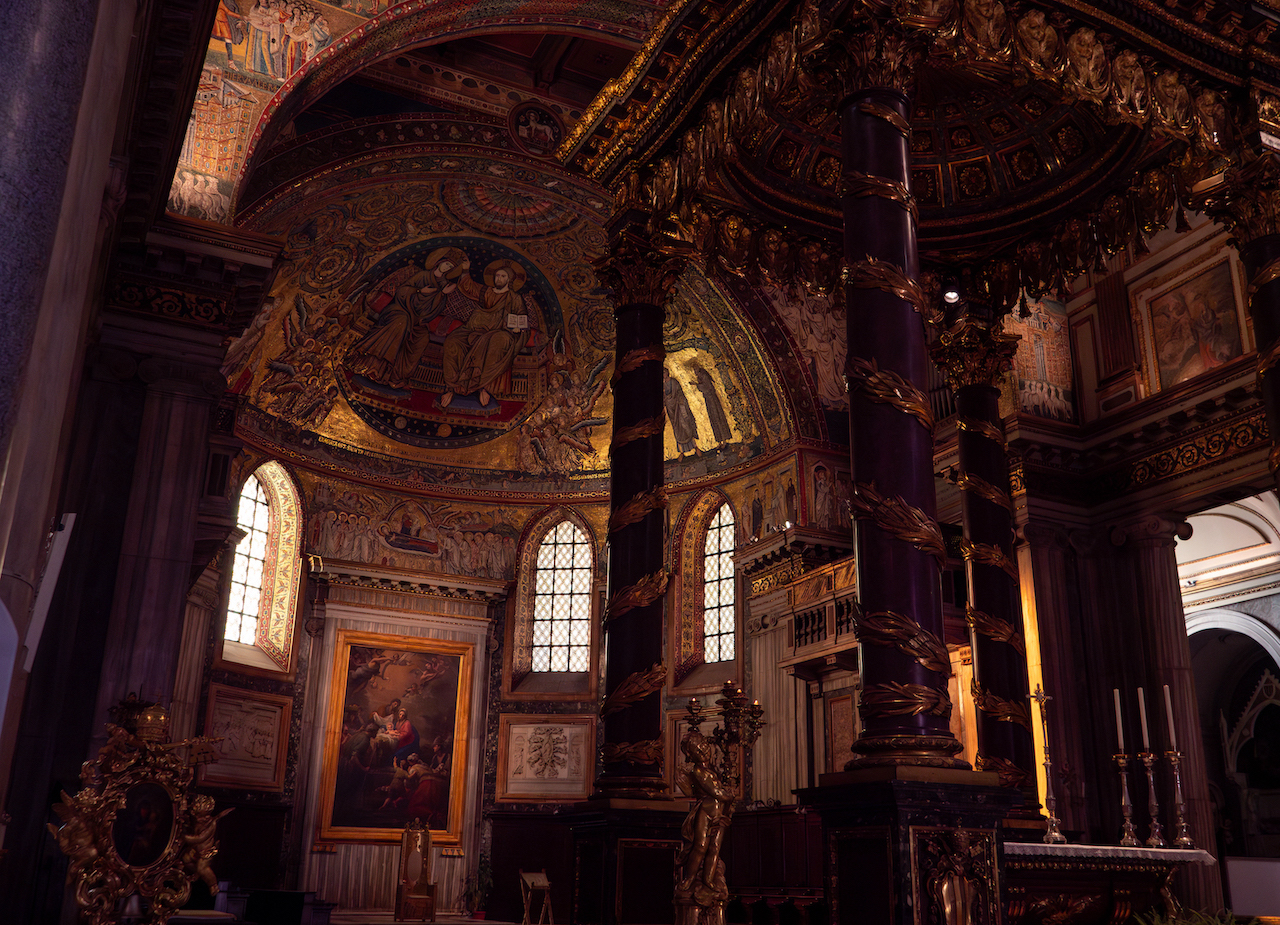
Santa Maria Maggiore is brimming with some of the city's most spectacular mosaic cycles. The oldest are the mosaics in the nave and the triumphal arch behind the papal altar. They date to the 5th century AD and were commissioned by Pope Sixtus III.
He commissioned them after the Council of Ephesus in 431 AD, which proclaimed Mary as Theotokos (Mother of God)—a sticky theological subject at the time. These early images of the Virgin became a model for future representations of her.
The mosaics in the apse and the Benediction Loggia date to the later Medieval period, c.1300. They're equally beautiful, and the experience of visiting the loggia is breathtaking. Also, on the loggia, you'll find the original angels that used to adorn the 'Baldicchino' of the Basilica.
10: The Bell Tower
This is the tallest bell tower or campanile in Rome, at 75 meters (246 feet). It dominates the skyline in the neighborhood, especially considering that the Basilica is also located on top of Rome's highest hill, the Esquiline.
11: Cosmatesque Floors

There's no shortage of beautiful marble floors in Rome. However, only a few places can boast Cosmatesque floors. Think of them like intricate marble carpets. The floor of the central nave was laid in the 12th century AD. Many of these ancient floors were ripped up and replaced during the Renaissance, so its rare survival is special.
12: The Ancient Egyptian Obelisk
Like many of Rome's churches, Santa Maria Maggiore boasts an obelisk as a "marker" outside. The Romans brought these ancient Egyptian artifacts to the city and manufactured their own. Later, the Church recycled them. This obelisk is a Roman copy and once stood outside Augustus's mausoleum. In the 16th century, the Pope ordered it to be erected at the Basilica and "Christianised" with a cross.
It stands 29.53 meters high (97 ft), including the pedestal (14.75 meters without), and is sculpted from red granite. It's estimated to weigh a shocking 235 tons.
13: The Other Sistine Chapel
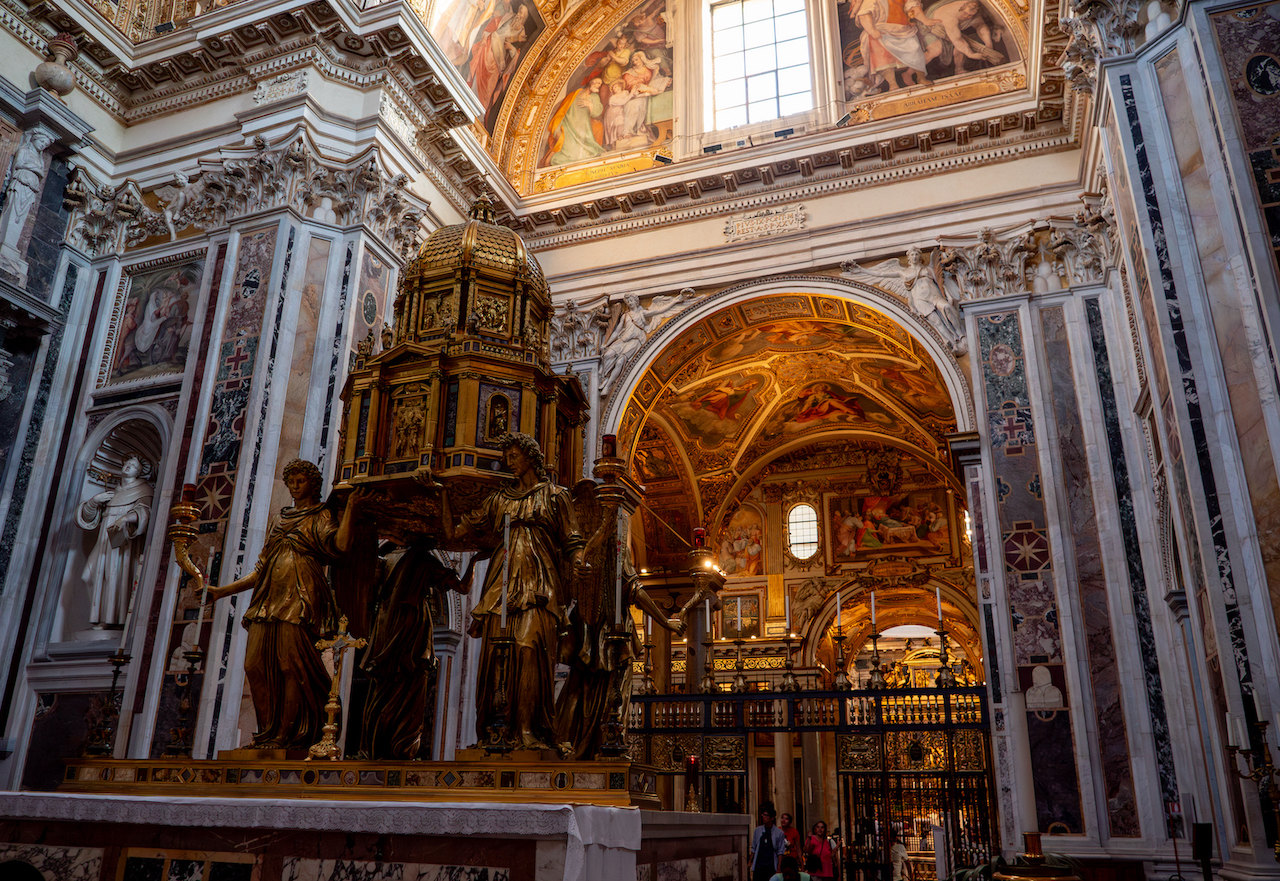
Did you know that there are two Sistine Chapels? They were commissioned by different popes at different times and in different places, of course. The Sistine Chapel in Santa Maria Maggiore was commissioned by Pope Sixtus V in the 16th century. It's a small side chapel in a Greek cross shape, the work of Domenico Fontana. The opulent tabernacle dates to 1590.
For 25 years, Through Eternity have been organizing itineraries showcasing the best of Rome led by our resident expert guides. If you're planning a visit to the Eternal City this year, be sure to get in touch to help plan your perfect trip!
More From the Blog on Rome
- Everything you Need to Know About Visiting Rome
- 6 Most Ancient Churches in Rome
- How to visit the Colosseum in 2024: Tickets, Hours, and More
- 7 Things you Need to Know About the Trevi Fountain
- Visiting the Vatican Museums and St. Peter's Basilica: The Complete Guide
- 9 Things You Need to Know About the Pantheon in Rome
- 5 Reasons to Explore Italy with Through Eternity
- The Best Catacombs to Visit in Rome
